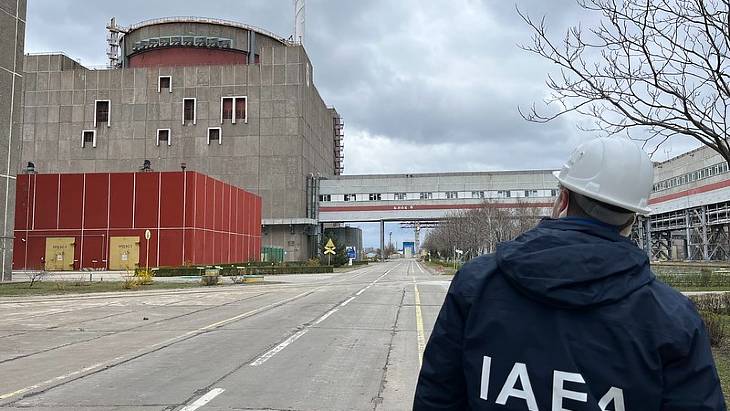The Zaporizhzhia nuclear power plant (ZNPP) has six units and is Europe's largest. It has been under Russian military control since early March 2022 and is located on the frontline of Russian and Ukrainian forces. In an effort to try to reduce the risks to nuclear safety of the situation there have been IAEA experts stationed at the site since September 2022.
The current rotation of agency experts were told by the operators of the plant that it lost connection to the monitoring station, which is about 16 kilometres away, on Monday afternoon. The agency says that during the conflict several radiation monitoring stations within 30 kilometres of the plant have been out of service for varying periods of time.
Last week there was a 16-hour loss of power in the associated city of Energodar, where many of the nuclear power plant staff and their families live, which the IAEA said "caused a temporary halt in the operation of some of the environmental radiological monitoring stations after they ran out of back-up battery".
Grossi said: "The loss of one radiation monitoring station does not have a direct impact on safety at the ZNPP, but it forms part of a continuous erosion of a range of safety measures during the war that remains a deep source of concern.
"The functioning of off-site radiation monitoring equipment is an essential part of nuclear safety around the world. These systems are important for continuously monitoring radiation levels and, in the case of an emergency, for quickly assessing the ongoing and potential radiological impact and what protective actions may need to be taken."
Ukraine is among 51 countries which participate in the IAEA's International Radiation Monitoring System which collects monitoring data from more than 6000 monitoring stations operating across the world.
In the IAEA's latest update on the safety and security situation for Ukraine's nuclear power plants, it said that staff at Zaporizhzhia continued to hear regular explosions some distance from the plant. Among their activities this week they had witnessed the testing of an emergency diesel generator, to check it started up within 11 seconds of the loss of off-site power, and had also visited the site's temporary on-site emergency centre.
There are also IAEA teams at Ukraine's other nuclear power plants, with those at the South Ukraine nuclear power plant reporting there had been military action in their region, although they were told that neither their hotel nor the plant itself had been targeted. The IAEA also reported that it had arranged two more deliveries of equipment to Ukraine in the past week - taking the total since February 2022 to 51 - to support the country in maintaining nuclear safety and security.






_63865.jpg)
_18570.jpg)
_16159.jpg)





